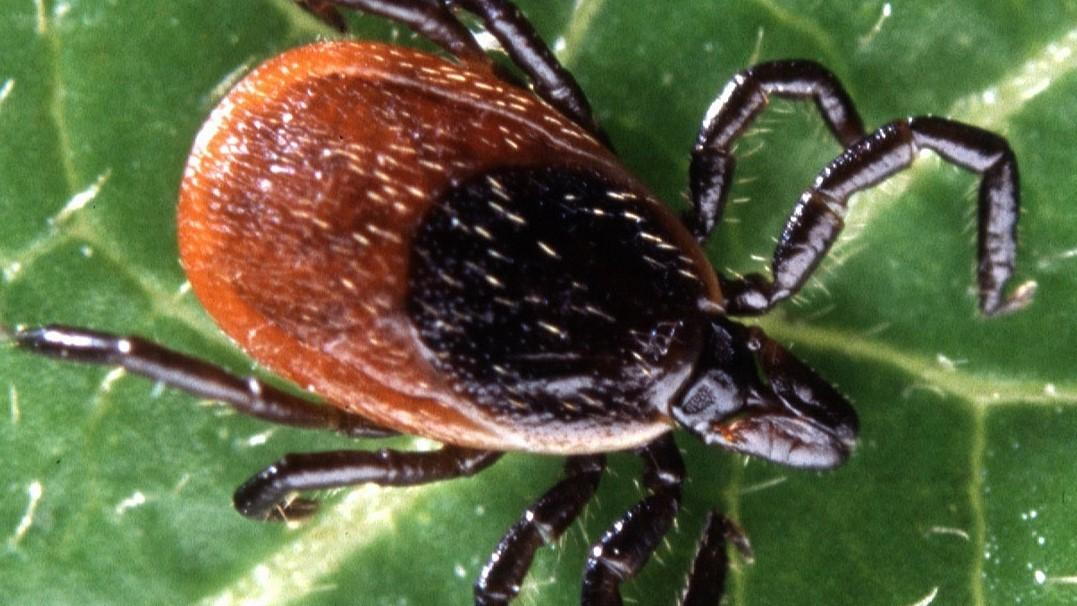Tick Myths

- posted: Nov. 14, 2020
Tick Myths
It’s November in Pennsylvania which means a mixed bag of weather—75F one day, 45 the next. But ticks disappear this time of year, right? Unfortunately, the common belief that ticks disappear in the fall and winter is not true. Let’s debunk this and two other myths about ticks today and learn how to protect your pets.
MYTH 1. Ticks die or disappear in the winter. Ticks may become dormant or less active in cold weather, but they don’t die. And, if the weather warms above freezing, they become active again regardless of the time of year. Deer ticks--common in York County and responsible for spreading Lyme disease--are actually more active and out feeding from mid-August through November. Ticks can also overwinter in leaf litter, move indoors (!) or spend winter on animals. The moral is, it’s best to protect your pets from ticks all year, not just during the spring and summer.
MYTH 2. Ticks live in tress. It may seem like ticks drop onto us and our pets from the tress sometimes, but, ticks don’t actually live in the trees themselves. They do live in tall grass and brush or bushes and shrubs along trails and wooded areas. But ticks can also be found in urban and suburban yards, so no pets are truly safe from these nasty critters. These tricky ticks do climb blades of grass and wait for unsuspecting animals or people to pass by then grab on.
MYTH 3. It’s a problem if you remove a tick and the head remains. So, this seems to be the most common question/concern we hear about ticks at Patton Veterinary Hospital—what happens if the tick head gets left behind? If you try to pull a tick off your pet, and the head breaks off, don’t panic! It’s fine. The head may cause some minor irritation or sometimes a minor infection of the skin, but it’s not dangerous and it will get pushed out or fall off in time. Tick heads without the body no longer transmit disease and will not grow into a new tick. And remember, the best way to remove a tick is to grasp it as close as possible to the head/skin with tweezers and pull back firmly to remove it. DO NOT try to burn ticks or apply nail polish or Vaseline to them to remove them. Trying to burn a tick with a lighter or match may actually burn you or your pet and is not an effective way to remove ticks. Coating the tick with something like nail polish may eventually kill it, but it may transmit diseases like Lyme, Ehrlichia or Anaplasmosis to your pet before it dies. Grab those ticks with tweezers and pull them off! Once the tick is removed, clean the area with a little rubbing alcohol or antiseptic and monitor the site. If there is a little redness or swelling of the skin around the bite, it should disappear in a few days.
If a tick bite looks infected or if your pet has a tick and you’re unsure how to remove it or unable to remove it, get help from your vet.
Remember to protect both dogs and cats year-round with proper flea and tick protection. There are many safe and effective options available for both cats and dogs. Patton carries Revolution and Bravecto topical for cats and Vectra 3D topical and SImparica and Bravecto chews for dogs. We’re happy to discuss other options and many can be ordered through our online pharmacy linked here: https://pattonvethospital2.securevetsource.com/index.pml
This blog brought to you by the Patton Veterinary Hospital serving Red Lion, York and the surrounding communities
https://www.diamondpet.com/blog/health/flea-tick/6-myths-about-ticks/
Location
Patton Veterinary Hospital
425 E Broadway
Red Lion, PA 17356
